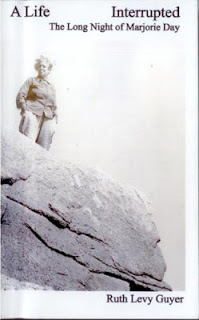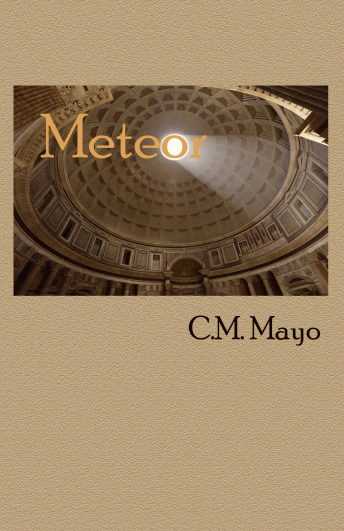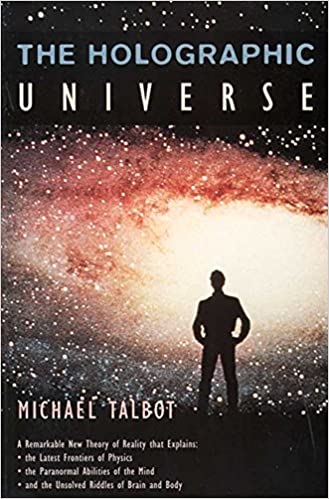
One of the most crucial things I discuss in the introduction to my translation of Madero’s Spiritist Manual of 1911 (***UPDATE My book, Metaphysical Odyssey Into the Mexican Revolution, is now available***) is his treatment of the Hindu holy book, the Baghavad-Gita (also spelled Bhagavad-Gita, and with or without the dash and various accents). Madero’s commentary was originally published in the Mexican Spiritist magazine, Helios,Tomo VII, 1912– while he was serving as President of Mexico– and it is reprinted in José Vasconcelo’s Estudios Indostánicos, of which I found the third edition of 1938. Herewith Vasconcelos’ introduction (in italics), then Madero’s commentary, and finally, in italics again, Vasconcelos’ conclusion. English translation coming ASAP.
(Note that Madero here refers to the warrior Bima, but used Bhima with the added “h” as his pen name for the Spiritist Manual. What was going on with that h, I have no idea. The bold text is as as I found it.)

Ya hemos indicado en los apuntes históricos que el Mahabharatta corresponde al segundo periódo del pensamiento indostánico. No se conoce la fecha del poema, pero por las doctrinas y referencias que contiene, se deduce que es posterior a los Upanishads y probablemente anterior al budismo. El episodio más importante del Mahabharatta es el libro conocido con el nombre Baghavad-Gita. Nada se sabe del autor de la obra sino que se llama Vyasa, un nombre, por lo demás, muy común en la literatura hindú. El poema está escrito en sánscrito.
Comienza con un diálogo entre Arjuna, el jefe de un ejército y Krishna, el dios que lo auxilia en la batalla. Los cuernos de la guerra han anunciado que va a comenzar el combate, las flechas comienzan a volar por el aire, y entonces Arhuja pide a Krishna que le permita ver el ejércit enemigo. Krishna interpone su carro luminoso y por un momento interrupte el combate. Arjuna pasa revista a sus enemigos. Allí esta Bima, su rival, fuerte y rodeado de atrevidos guerreros, acompañado de las tribus y de los mismos parientes y amigos de Arjuna. Al contemplar a todos estos hombres, Arjuna siente que no los odia, y se duele de tener que luchar con ellos; vacila y pregunta a Krishna: ¿cómo podré yo cambatir contra Bima y Drona, si entre todos los hombres ellos son los más dignos de mi respeto? Preferiré mendigar mi pan por el mundo, antes que ser el asesino de estas gentes… No podría decir si es preferible que nos derrotan o qye nosotros los derrotemos. Pues los enemigos que allí nos esperan, con los pechos llenos de rencor, son los hijos del pueblo de Dhiritarashtra, si si hubieren de perecer por mi mano, yo no desearía vivir… no los combatiré…
Krishna contesta, haciendo ver a Arjuna la futilidad de la vida lo mismo que la imposibilidad de la muerte, la imposibilidad de matar el espíritu, etc. Le hacer ver también que si huye y no combate, el enemigo lo atribuirá a cobardía; en cambio, una vez iniciado el combate, si mueres, le dice Krishna, irás al cielo; y si vences, el mundo será tuyo. En el curso de su disertación, Krishna instruye al guerrero en las doctrinas del yoga activo y en la salvación que se logra mediante las acciones justas y el abandono de los deseos; le expone la doctrina de la reencarnación y de la liberación.
En el capítulo tercero, Krishna sigue su discurso, explicando la salvación que se logra por la ejecución adecuada de las acciones. En el cíatulo cuarto, se habla del conocimiento espiritual.
A partir de este capítulo cuarto, suspendo mis notas, remitiendo a los lectores al admirable texto original, que es muy fácil de obtener; pero quiero cerrar mi capítulo con un comentario que es quizás el primero que se escribió en México, del Baghavad-Gita; un comentario que procede del extraordinario y nobilísimo espíritu, que enyre nosotros fue apóstol, pensador y presidente mártir, y que conocimos con el nombre terrestre de Francisco I. Madero. Del comentario de Madero posee sólo un fragmento, que dice textualmente:
“Este capítulo (el 4o.) trata de la verdadera devoción, en términos tales que merecen meditarse seriamente, porque demuestran cuán profundas y grandiosas son las enseñanzas del Baghavad-Gita; cuán amplio es su espíritu de tolerancia y cómo concuerda conlas enseñanzas de Jesús, quien consideraba como ley principal el amarnos los unos a los otros. Así el Baghavad-Gita dice en este capítulo, versículo 4, que el principal culto que debe rendirse al Ser Supremo y el camino que él conduce, consiste en refrenar los sentimientos, equilibrando el entendimiento y complaciéndose en el bien de todos los seres.
“Se vé, pues, que el modo más eficaz de adorar a la divinidad es “complacerse en el bien de todos los seres”, o lo que es lo mismo, amar a nuestros hermanos, como decía Jesús.
“Es indiscutible que también es necesario refrenar y dominar los sentidos, pues de otra manera los deseos y las pasiones nos ofuscan e impiden amar a nuestros semejantes y desear su bien.
“En los versículos 5 y 6 explícase que: “ardua por demás es la tarea de aquel cuya mente se halla fija en lo Inmanifestado”; refiriéndose a la gran dificultad que implica concentrar por completo la mente en lo divino y permanecer en constante meditación o adoración. Y en verdad, cualquiera que haya intendado concentrar su mente en ese sentido, habrá observado cuán pocos son los minutos en que se puede lograr tal resultado, siendo casi imposible evitar que otros pensamientos vengan a perturbar y distraer la atención.
“Así dice que ese camino está lleno de dificultades, pero en cambio, no es indispensable tal práctica, sino que basta con renunciar en El todas sus acciones y que El constituya el idea supremo, para que lo salve sin tardanza del piélago de a muerte y de la existencia.
“Por renuncia en El de todas sus acciones, debe entenderse que todos nuestros actos deben tener un fin altruísta, un fin bueno; el de servir los designados de la Divinidad, trabajando en cualquier forma por acelerar la evolución de la humanidad y por ayudar a nuestros semejantes.
“Todas las acciones que tengan un fin de tal naturaleza y no busquen recompensa terrenal, sino que se ejecuten con el propósito de servir a la Divinidad, son las que más pesan en su balanza.
“Los que obran de esta manera, indudablemente consideran a la Divinidad como su ideal supremo, puesto que sus principales aspiraciones consisten en colaborar de acuerdo con sus designios a la realización del grandioso plan Divino.
“En los versículos 8, 9, 10, 11 y 12 vuelven a expresarse las mismas ideas, considerando siempre superior a la renuncia las obras, al conocimiento, la práctica perserverante y a la meditación (Versículo 12).
“El versículo 8 recomienda la concentración de nuestra mente para adorar al Ser Supremo; pero como esto es muy difícil obtenerlo, según acabamos de exponer, entonces el versículo 9 recomienda toda clase de prácticas religiosas, las cuales ayudan a concentrar la atención y a aumentar la devoción. Si aun esto se dificulta, recomiendo el versículo 10 dedicarse a ejecutar obras por consideración a El tan sólo. Como este concepto parace semejante al que se expresa en el versículo inmediato, consideramos que debe interpretarse en el sentido de: consagrarse al culto de la Divinidad, afiliándose en alguna sociedad u orden religiosa, puesto que un sacerdote de cualquier culto indudablemente se dedica a ejecutar obras por consideración a la Divinidad a cuyo servicio dedica todos sus esfuerzos desde el momento de su consagración.
“Por último, si aun esto no es posible, entonces recomienda refugiarse en El por medio de la Unión Espiritual, y, subyugándose a sí mismo, renunciando por completo al fruto de sus acciones.
“Todo esto puede efectuarse llevando la vida mundana, sin necesidad de recluírse en un claustro, no de abandonar la familia y las ocupaciones ordinarias. Es, por consiguiente, posible llegar al grado máximo de virtud y evolución que puede alcanzar el ser humano, dedicándose a la vida ordinaria, a la profesional, a la agricultura, a los negocios, a la política y a todas las ocupaciones que exige la moderna civilización, así como la constitución de un hogar y de una familia; basta para ello unirse espiritualmente con el Ser Supremo, es decir, llegar al resultado de que todos nuestros actos tengan un fin bueno y útil a la humanidad, o sea, que todos ellos estén en harmonia con el Plan Divino, porque tienden favorecer el bienestar del género humano y su evolución. Para lograr este resultado, es indispensable, como dice el mismo versículo, “subyugarse a sí mismo”, porque de otra manera las pasiones nos impiden tener la serenidad de espíritu y la rectitud necesarias para obrar siempre bien.
“Por último, estando unificados espiritualmente con la Divinidad y habiéndonos subyugado a nosotros mismos, “debemos renunciar al fruto de nuestras acciones”. Ya hemos explicado que por “renunciar al fruto de nuestras acciones” debe entenderse que al ejecutar cualquier acto meritorio no debemos hacerlo en vista de la recompensa que de él esperamos, sino por considerar que tal es nuestro deber y que de esa manera servimos al Ser Supremo: lo cual debe ser para nosotros la principal y la más honda de las aspiraciones. Servir a la Divinidad, convertirnos en agentes de su voluntad, en colaboradores, y buscar como recompensa la satisfacción qie se siente con la conciencia del deber cumplido, con la paz que se disfruta cuando ningún deseo ni pasión nos agita, tal debe ser nuestra aspiración suprema.
“El resto del capítulo expresa la idea de que los hombres de ideas benévolas, compasivos, indiferentes en medio del placer y del dolor, pacientes en las ofensas, contentos con su suerte, constantamente harmonizados dueños de sí mismos, firmes en sus resoluciones, con la mente y el discernimiento fijos únicamente en la Divinidad y devotos en ella, así como aquel que no turba al mundo ni por el mundo se ve turbado, que está libre de las emociones causados por la alegría, la cólera y el temor, etc., son dignos de la estimación, el aprecio y el afecto de la Divinidad.
“También son acreedores a este afecto los que se muestran iguales ante el amigo y el enemigo, indiferentes en el honor y en la ignominia, imperturbables a la alabanza y al vituperio, etc.
“Insistiendo sobre la idea ya expresada anteriormente, afirma que es el objeto de la predelicción del Ser Supremo, aquel que lleno de fe sigue la ley que confiere la inmortalidad (complacerse en el bien de todos los seres y renunciar en la Divinidad todas sus acciones), asimismo al que hace del Ser Supremo el más alto ideal de sus aspiraciones, idea que debe entenderse según la hemos expresado en los comentarios de este capítulo.
“Como se ve, son grandiosas todas las concepciones que encierra el Baghavad-Gita, y está muy lejos de recomendar esas prácticas supersticiosas tan en boga en la mayoría de las religiones, aun de las que actualemente profesan los pueblos civilizados, y, según las cuales se da más importancia a determinadas prácticas religiosas que al cumplimiento del deber, sin considerar que cumpliendo con el deber, es como se favorece en un plano más vasto y extenso el bienestar y progreso de la humanidad.
“Indudablemente un guerrero, que va a la lucha por el bien de sus semejantes, hace un acto más meritorio ante la Divinidad que el sacerdote que se dedica exclusivamente a sus prácticas religiosas ‘, sin unir a la oración la acción. Este sacerdote, si acaso, se limita a tener buenos deseos para la humanidad, si no es que, como acontece generalmente, piensa únicamente en la salvación de su propria alma, y con tal objeto e inspirado en un sentimiento egoísta, se dedica a las prácticas religiosas más extrañas.
“No queremos terminar el comentario de este capítulo dejando inadvertido el versículo 8o. en lo relacionado con la idea panteísta, pues viene a confirmar nuestras constantes observaciones sobre el Baghavad-Gita, y es que en esta obra no tienen cabida las ideas panteístas, contrariamente a las deducciones hechas por investigadores superficiales.
“En este versículo dice: “Fija, pues, tu mente en Mí, penetra en Mí tu entendimiento y sin duda alguna, después de tu muerte, viviras en Mí en las alturas.“
“Vivirás en Mí en las alturas”, no significa ir a absorbernos en el Ser Supremo y a formar parte de El mismo, sino que nos acercaremos a El, y llegando a identificarnose con sus designios, viviremos para El y dentro de El; pero siempre conservando nuestra propia individualidad, así como la inmensa y muy respetable distancia que nos separa de Aquél “que con una partícula de Sí mismo dio origen y actividad al Universo entero y sigue existiendo” (capítulo X, versículo 42).
“Por ese motivo, cada uno de nosotros, parte infinitesimal de ese Universo, no puede pretender llegar a ser tan alto como El, que lo creó con una partícula de Sí mismo.
“Nuestro destino es muy glorioso y muy alto el lugar que llegaremos a ocupar entre los que rodean al Ser Supremo y del gobierno del Universo; llegarán nuestras aspiraciones a confundirse con sus designios; pero por más que nos identifiquemos con el plan divino, nunca perderemos nuestro Yo, nunca llegaremos a ser parte del Dios, que no está integrado por millares de seres, sino que es Uno e Indivisible.”
Impresionante resulta imaginar los pensamientos de Madero cuando llegó a encontrarse en los campos mexicanos, en la situación de Arjuna dispuesto a combatir un ejército de enemigos que no odiaba, pero que era su deber destruír. Venció a esos enemigos, el Arjuna de México, en la noble lid de la fuerza, y después perdonóles con tierno espíritu cristiano; más para ser víctima de Judas, en la más negra y cruel de las tradiciones.
I welcome your courteous comments which, should you feel so moved, you can email to me here.

Ignacio Solares’ “The Orders” in Gargoyle Magazine #72
Why Translate? The Case of the President of Mexico’s Secret Book
My Interview About Francisco Madero a “Classic Reboot”
on Jeffrey Mishlove’s “New Thinking Allowed”–
Plus From the Archives:
A Review of Kripal and Strieber’s The Super Natural
(and Reflections on Mishlove’s The PK Man)











